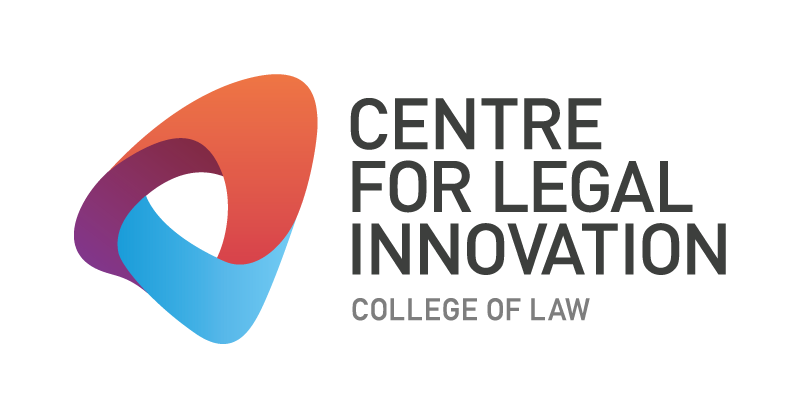The traditional lawyer doesn’t exist anymore
Sarah Rey is no stranger to taking a different approach. As managing partner of workplace law firm Justitia, she leads a firm highly regarded for its commitment to sustainable lawyering through promoting flexible work practices and a positive work place culture. Whilst the technological advances through the implementation of hardware and software have helped her firm and profession, she thinks it is the reconceptualization of how teams work together and how efficiently work can, as a consequence, be carried out, that makes her firm unique.
On another front, legal innovation is disrupting the traditional mechanisms for dispute resolution. “Some Court jurisdictions are streamlining their services. For example, the Fair Work Commission is not only conducting conciliations mostly by phone, but is also considering whether it will hold conciliation meetings electronically, where the parties will submit ‘bids’ to resolve their individual claims.”
“The impacts of legal innovation are many and contribute to increased productivity, however, there can be downsides.” Sarah said. “The quick turn-around in work facilitated by computer technology inevitably increases client expectations and in turn, stress on lawyers. The access to technology and databases allows research and work to be undertaken anywhere, anytime. There is less need to meet colleagues and clients face to face, as interactions can happen by email or phone, which is not always good because it removes the human connection.”
While the pressures created by legal innovation do come at a cost, there are many opportunities as well.
“Lawyers who have diverse skills, particularly IT and entrepreneurial skills, will be more in demand. Courts are streamlining their processes, which will hopefully lead to increased and less costly access to justice by clients. Increasingly, courts will cut out lawyers because of perceived improvements in efficiency and fairness, as we have seen with the Fair Work Commission. Courts have adjusted to self-represented litigants and this is evident in the changes they have made so procedures are easier to follow and, as a result, clients now think there is less or in fact no role for lawyers.”
“Suburban firms which have less capacity to adopt new technology and adapt to changing client demands may slowly merge or disappear”, Sarah said. “Central to the disruption”, said Sarah, is “clients wanting more for less. This in turn places pressure on lawyers and firms to consider new ways of doing things, which is a challenge when as a profession we don’t like to take risks.”
While automation, offshoring and artificial intelligence will not do away with lawyers entirely, menial and administrative components of a matter will no longer be undertaken by humans.
“Although these changes potentially reduce overall cost, it has also reduced opportunities for junior lawyers to learn ‘on the job’ by undertaking more routine or commoditised work. Justitia prides itself on its programme to assist law students through offering paid employment to Legal Research Assistants who carry out research and admin tasks for lawyers. Unfortunately there will inevitably be less work available for secretarial staff in firms, as agile or junior lawyers are more technologically self-sufficient and can do their own work. Firms will have bigger departments charged with implementing technology, and less need for bricks and mortar, because for much of the work there is no need to be in an office.”
With the disruption of the legal profession now well underway, Sarah encourages lawyers to keep abreast of technological innovation, particularly in terms of facilitating workplace flexibility, and to constantly challenge the paradigm regarding the skills and attributes it is thought a lawyer should possess. Work needs to be re-engineered in a way that allows teams to work cohesively; without requiring bodies to be in an office 24/7. This will enhance mental well being, and lead to less churn of personnel. It requires a different type of leadership and a high level of project management skills.
The traditional lawyer does not exist anymore. What is required by those entering the profession, more than ever before, is a more diverse range of skills, and an understanding of how they can make those skills useful to their employer and clients. “When you look at accounting firms, they are miles ahead on the workplace flexibility front. Why are law firms so slow when the work is in many respects similar?”
On another front, social networking means that business is facilitated through entirely different avenues from the past. Once upon a time, lawyers built their work flow as a result of long work lunches and visits to their club, but now we have the revolution of LinkedIn and the like, where knowledge and expertise is showcased through publishing content. Connections are readily formed through links with colleagues who share common interests. This is a revolution and potentially more merit based then the old ways.
Sarah praises the Centre for Legal Innovation for bringing like-minded people together to put the spotlight on technology and innovation and provide guidance to new lawyers entering the profession. “We should share information about what the trail blazers of the profession are doing. CLI issues a clarion call to the profession to embrace change, as the alternative is to wither and become redundant.”

